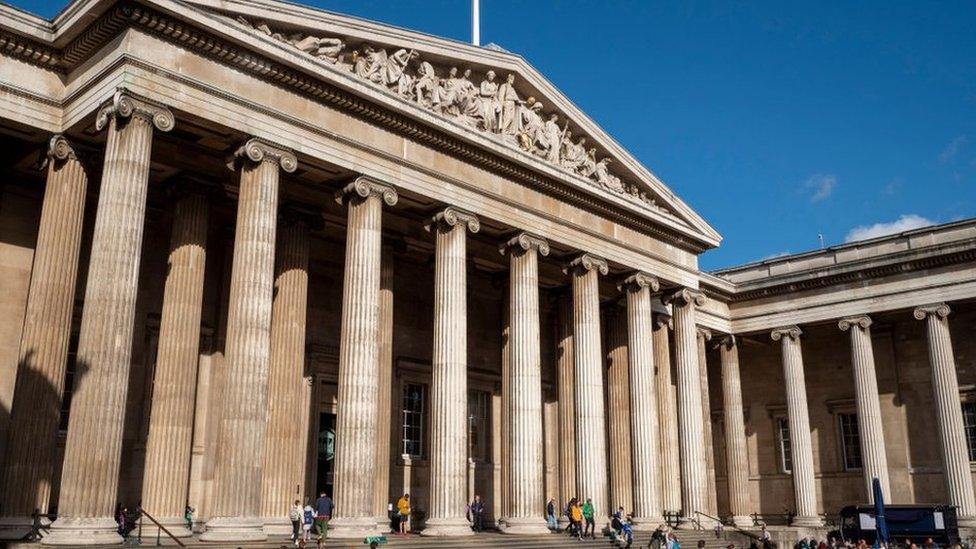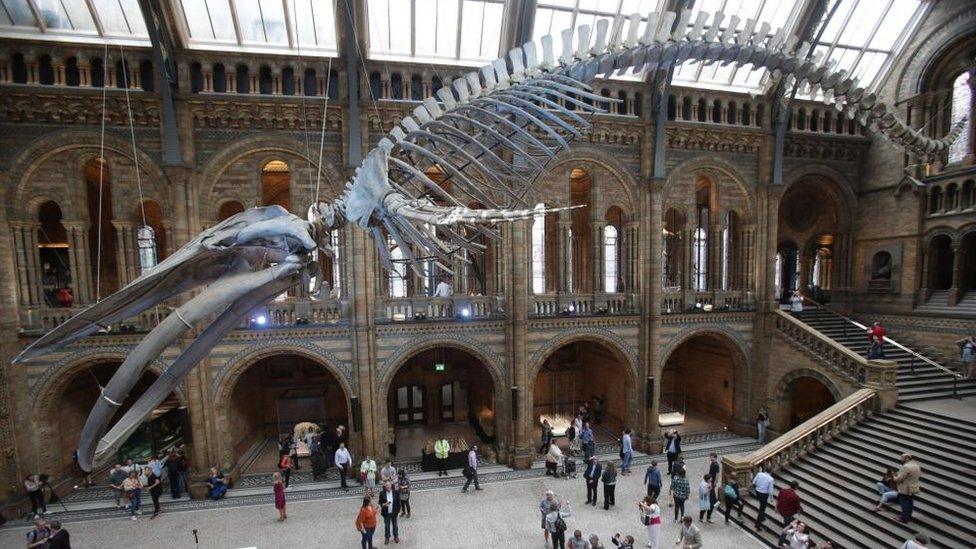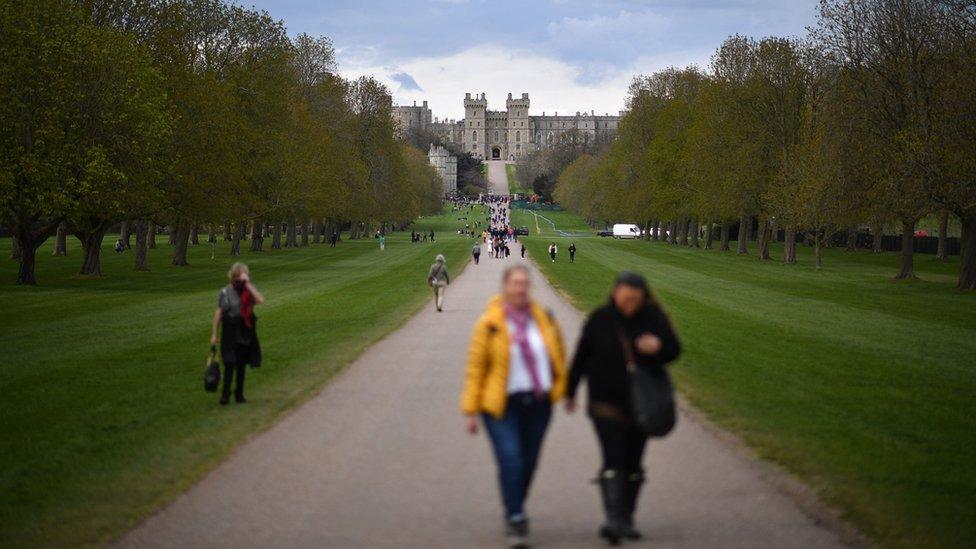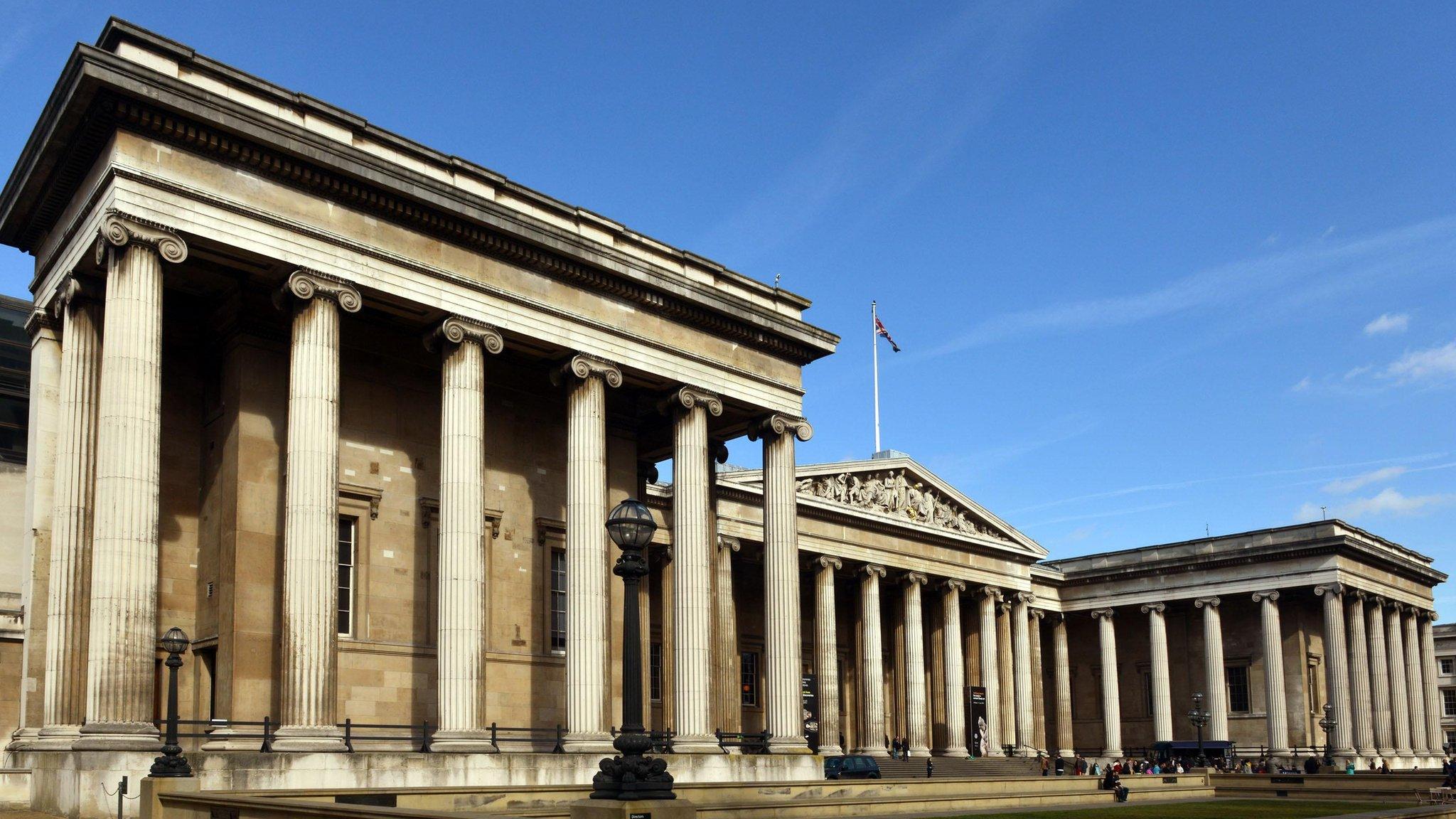British Museum is the most-visited UK attraction again
- Published

The last time the British Museum was the most-visited attraction was in 2019
The British Museum was the UK's most-visited attraction for the first time since before the Covid pandemic, according to a tourism industry body.
Figures from the Association of Leading Visitor Attractions (ALVA) showed there were 5,820,860 visits to the central London museum in 2023, a 42% increase on 2022.
The museum put the rise in part down to its China's hidden century exhibition.
The second most-visited attraction was London's Natural History Museum.
Figures showed the South Kensington attraction had its best-ever year, with a 22% increase in visitors to 5,688,786.
The most-visited outdoor attraction was Windsor Great Park, which is managed by the Crown Estate, with 5,487,856 visitors, which was a 3% decline on 2022 figures.
Bernard Donoghue, director of ALVA, said: "Our members are not yet back to hosting the same number of visitors that they did in 2019, but they are really delighted that even in a challenging cost-of-living climate visitors are still prioritising spending special time with special people at special places."

People 'have got used to going out less'
Analysis by Noor Nanji, Culture reporter
Visitor numbers to the UK's most popular attractions increased last year, compared with the previous 12 months, according to ALVA. But the total figure is still lower than before Covid-19 struck.
Mr Donoghue told BBC News many people got out of the habit of going to galleries and exhibitions during Coronavirus lockdowns.
He added that overseas visitors - particularly from China - have also not returned to pre-pandemic levels. International visitors make up an important part of overall footfall to UK attractions, and they tend to spent a lot.
The cost of living remains high, and that could also be impacting how people spend their leisure pounds.


The second most-visited attraction was London's Natural History Museum
The total number of visits to ALVA sites in 2023 was 146.6 million, which was a 19% increase on the previous year, the figures showed.
But that still represented a decline of 11% on the 163.9 million visits in 2019 to the top 374 ALVA sites.
Indoor attractions saw a 23% increase in visitors compared with a 2% increase in outdoor attractions.

Windsor Great Park was the most-visited outdoor attraction with 5,487,856 visitors
The last time the British Museum was the most-visited attraction was in 2019. In 2022, it was the third most-visited attraction.
Sir Mark Jones, interim director of the museum, said: "It's wonderful to see visitors coming back to support all our great cultural institutions following the pandemic.
"We're proud to be the most-visited attraction in the UK and I want to thank British Museum staff for working tirelessly to give the best offer to our visitors."
In the Coronation year, Westminster Abbey had a 49% increase in visitors and worshippers to 1,587,866, Windsor Castle saw a 66% increase to 1,374,607 visits and Buckingham Palace welcomed 501,499 visitors, which was a 75% increase, during its summer opening between 14 July and 24 September.

Burghley House in Lincolnshire saw an 86% increase in visitor numbers to 154,827
In Scotland, the most-visited free attraction continued to be the National Museum of Scotland while in Northern Ireland, Titanic Belfast continued to be the most-visited attraction, ALVA said.
In Wales, the most-visited attraction was St Fagans National Museum of History, near Cardiff, with 594,990 visits - a 23% increase.
Outside London, attractions that performed well included RHS Garden Wisley in Woking, Surrey, in 21st place, and Burghley House in Lincolnshire, which saw an 86% increase to 154,827 visitors after the introduction of an adventure playground.

The top 10 UK visitor attractions 2023
1. British Museum - 5,820,860
2. Natural History Museum - 5,688,786
3. Windsor Great Park - 5,487,856
4. Tate Modern - 4,742,038
5. Southbank Centre - 3,193,966
6. V&A South Kensington - 3,110,000
7. The National Gallery - 3,096,508
8. Science Museum - 2,956,886
9. Tower of London - 2,790,280
10. Somerset House - 2,727,677

Listen to the best of BBC Radio London on Sounds and follow BBC London on Facebook, external, X, external and Instagram, external. Send your story ideas to hellobbclondon@bbc.co.uk, external
- Published17 March 2023

- Published18 March 2022

- Published16 March 2015
